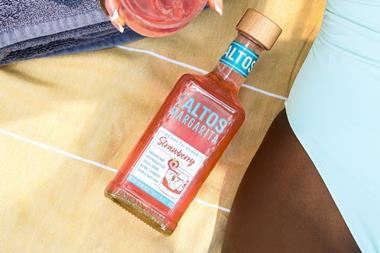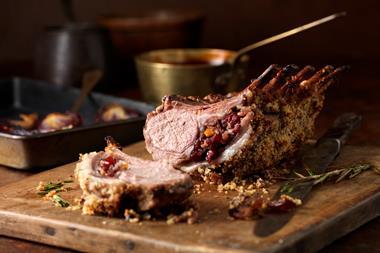After the recession, will budget own-label lines remain in the limelight? Nick Hughes reports from The Grocer's Own-Label Excellence Seminar
It was once the poor relation of the industry but in the past decade own label has undergone a makeover that would make Gok Wan proud.
The flight to own label, particularly the stellar growth of budget lines, was high on the agenda at The Grocer’s Own-Label Excellence Seminar this week. With speakers from both the retail and supplier camps, the debate boiled down to two questions: is the move to value own label a permanent shift or a kneejerk reaction to the downturn and, with lines between brands and own label more blurred than ever, how can suppliers that serve both markets marry the own label and branded sides of the business?
Data presented by Ed Garner, director of research at TNS, showed like-for-like sales of supermarket budget lines rose significantly across all the big four in the 12 weeks to April 19. Tesco Value was up 34%, Asda Smart Price 20%, Sainsbury's Basics 62% and Morrisons’ budget lines 79%.
Debbie Robinson, director of food retail marketing at The Co-operative Group, added that sales of Co-op Simply Value lines were up 48% to date in 2009 compared with static growth in 2008. But what is really capturing the imagination of the industry is the demographic of those buying value lines.
Out of a 56% increase in sales of Basics lines, 47% is coming from savvy, middle class shoppers who realise that ingredients used in the preparation of meals need not be of premium quality, said Sainsbury's brand director Judith Batchelar.
While the recession may have been a catalyst for the growth of Basics, it also reflected a shift in consumer perception of lower-tier products, which would endure beyond the downturn, she said.
“Consumers have worked out that if they’re looking at peppers or aubergines, it doesn’t matter what they look like, they’re going to be sliced and cooked. It’s all in the skill of the cooking. If you look at customers and what they’re doing from a choice point of view, they were buying organic or free range; now they’re buying more universal foods that deal with welfare issues such as Freedom Food, but at more competitive price points.”
As well as a consumer pull towards budget lines, there is evidently an element of retailer push towards the value end. Sainsbury's, itself, has been at the vanguard, block-merchandising Basics items and running a series of campaigns promoting own label. Feed Your Family for a Fiver showed shoppers how to cook on a budget without compromising on taste, while its Switch & Save campaign has flagged up to consumers that there is little difference between the quality of own label and branded, but own label is on average 20% cheaper.
“Switch & Save was born out of the logic that consumers know own label is cheaper but adding to the mix the insight that customers didn’t know that the quality of own label was also better than branded as well as cheaper,” Batchelar said.
Avoiding cannibalisation
With more affluent shoppers switching to Basics lines, the distinction between own label and branded is becoming increasingly less defined.
“Growth of value brands has really driven a bus through the whole market,” says Garner. “The artificial distinction between branded and own label is getting more and more blurred.”
For businesses that supply both own label and branded, segmenting consumers into those who will buy supermarket brands and those that won’t is no longer clear-cut. One of the questions addressed at this week’s seminar was, in light of the search for value, how can suppliers manage the pressure of serving both branded and own label?
James Lambert, CEO of R&R Ice Cream, which produces Nestlé ice creams under licence as well as own label ice cream for the big four, said that suppliers could serve both markets and avoid cannibalisation. “Own labels still tend to be everyday low-cost items. Products can perform with both everyday low-cost retailers and high-to-low retailers. The trick is to offer unique brands and own label that complement each other but do not compete directly.”
Alastair Woodcock, director of retailer brands at United Biscuits, agreed there was an opportunity for both sides of the business to thrive. “Own-label value products are performing exceptionally well, but we’ve also seen that if top-end brands are offered at the right price, these deals do really well. We have a very strong branded business but also a very strong retailer brand business. Frankly it’s an asset to us and we wouldn’t want to separate it. In our relationship with our key customers we find having both has benefits, firstly in terms of growing the whole category with our retailers and secondly simply in terms of filling the capacity of our factory.”
Lambert concurred that the most compelling reason for supplying both brands and own-label remained achieving economies of scale. “To compete with the biggest brands you need the biggest machines, and own label can fill any volume left over from production of brands. In Germany we are predominantly an own-label business but the UK market is not that big a market in comparison. Our machines are designed for French or German use so to get the most out of the facilities we couldn’t just do brands or own label.”
The trap some own label and brand suppliers fall into, said Lambert, was propping up one business with the profits of the other. “You must know financially whether you’re subsidising one part of the business with the other. It’s vital you know your costing.”
To the question of where to take product innovation in the first instance, Lambert disputed the suggestion that there was a potential conflict brewing between own label and brands. “If it’s a brand new idea, it’ll generally start as branded because the retailers haven’t the time or money to deal with uncertainties,” he says. “So when do you take brand ideas into own label? When it makes financial sense to do so. For us it very much gets developed around the individual. We keep the teams separate because we’re dealing with a lot of brands. So the team dealing with Sainsbury's is absolutely focused on what Sainsbury's can deliver. The retailers have different enough propositions to enable us to do that.”
Payback time
The big driver of what products to pitch where, said Woodcock, was payback. "If we can get the right level of payback with that investment, it doesn't matter who the customer is."
And in response to the delegate who flippantly posed the question that given the strong consumer trust own label now enjoys, why do we need brands at all, there was reassurance for brand owners from Batchelar.
"In the past, when we got up to 60% to 65% of own label, the feeling was that the balance had gone too far and we were no longer offering the consumer choice," she said. "There are some beacon brands that provide reassurance to consumers and will always be a vital part of the mix."
It was once the poor relation of the industry but in the past decade own label has undergone a makeover that would make Gok Wan proud.
The flight to own label, particularly the stellar growth of budget lines, was high on the agenda at The Grocer’s Own-Label Excellence Seminar this week. With speakers from both the retail and supplier camps, the debate boiled down to two questions: is the move to value own label a permanent shift or a kneejerk reaction to the downturn and, with lines between brands and own label more blurred than ever, how can suppliers that serve both markets marry the own label and branded sides of the business?
Data presented by Ed Garner, director of research at TNS, showed like-for-like sales of supermarket budget lines rose significantly across all the big four in the 12 weeks to April 19. Tesco Value was up 34%, Asda Smart Price 20%, Sainsbury's Basics 62% and Morrisons’ budget lines 79%.
Debbie Robinson, director of food retail marketing at The Co-operative Group, added that sales of Co-op Simply Value lines were up 48% to date in 2009 compared with static growth in 2008. But what is really capturing the imagination of the industry is the demographic of those buying value lines.
Out of a 56% increase in sales of Basics lines, 47% is coming from savvy, middle class shoppers who realise that ingredients used in the preparation of meals need not be of premium quality, said Sainsbury's brand director Judith Batchelar.
While the recession may have been a catalyst for the growth of Basics, it also reflected a shift in consumer perception of lower-tier products, which would endure beyond the downturn, she said.
“Consumers have worked out that if they’re looking at peppers or aubergines, it doesn’t matter what they look like, they’re going to be sliced and cooked. It’s all in the skill of the cooking. If you look at customers and what they’re doing from a choice point of view, they were buying organic or free range; now they’re buying more universal foods that deal with welfare issues such as Freedom Food, but at more competitive price points.”
As well as a consumer pull towards budget lines, there is evidently an element of retailer push towards the value end. Sainsbury's, itself, has been at the vanguard, block-merchandising Basics items and running a series of campaigns promoting own label. Feed Your Family for a Fiver showed shoppers how to cook on a budget without compromising on taste, while its Switch & Save campaign has flagged up to consumers that there is little difference between the quality of own label and branded, but own label is on average 20% cheaper.
“Switch & Save was born out of the logic that consumers know own label is cheaper but adding to the mix the insight that customers didn’t know that the quality of own label was also better than branded as well as cheaper,” Batchelar said.
Avoiding cannibalisation
With more affluent shoppers switching to Basics lines, the distinction between own label and branded is becoming increasingly less defined.
“Growth of value brands has really driven a bus through the whole market,” says Garner. “The artificial distinction between branded and own label is getting more and more blurred.”
For businesses that supply both own label and branded, segmenting consumers into those who will buy supermarket brands and those that won’t is no longer clear-cut. One of the questions addressed at this week’s seminar was, in light of the search for value, how can suppliers manage the pressure of serving both branded and own label?
James Lambert, CEO of R&R Ice Cream, which produces Nestlé ice creams under licence as well as own label ice cream for the big four, said that suppliers could serve both markets and avoid cannibalisation. “Own labels still tend to be everyday low-cost items. Products can perform with both everyday low-cost retailers and high-to-low retailers. The trick is to offer unique brands and own label that complement each other but do not compete directly.”
Alastair Woodcock, director of retailer brands at United Biscuits, agreed there was an opportunity for both sides of the business to thrive. “Own-label value products are performing exceptionally well, but we’ve also seen that if top-end brands are offered at the right price, these deals do really well. We have a very strong branded business but also a very strong retailer brand business. Frankly it’s an asset to us and we wouldn’t want to separate it. In our relationship with our key customers we find having both has benefits, firstly in terms of growing the whole category with our retailers and secondly simply in terms of filling the capacity of our factory.”
Lambert concurred that the most compelling reason for supplying both brands and own-label remained achieving economies of scale. “To compete with the biggest brands you need the biggest machines, and own label can fill any volume left over from production of brands. In Germany we are predominantly an own-label business but the UK market is not that big a market in comparison. Our machines are designed for French or German use so to get the most out of the facilities we couldn’t just do brands or own label.”
The trap some own label and brand suppliers fall into, said Lambert, was propping up one business with the profits of the other. “You must know financially whether you’re subsidising one part of the business with the other. It’s vital you know your costing.”
To the question of where to take product innovation in the first instance, Lambert disputed the suggestion that there was a potential conflict brewing between own label and brands. “If it’s a brand new idea, it’ll generally start as branded because the retailers haven’t the time or money to deal with uncertainties,” he says. “So when do you take brand ideas into own label? When it makes financial sense to do so. For us it very much gets developed around the individual. We keep the teams separate because we’re dealing with a lot of brands. So the team dealing with Sainsbury's is absolutely focused on what Sainsbury's can deliver. The retailers have different enough propositions to enable us to do that.”
Payback time
The big driver of what products to pitch where, said Woodcock, was payback. "If we can get the right level of payback with that investment, it doesn't matter who the customer is."
And in response to the delegate who flippantly posed the question that given the strong consumer trust own label now enjoys, why do we need brands at all, there was reassurance for brand owners from Batchelar.
"In the past, when we got up to 60% to 65% of own label, the feeling was that the balance had gone too far and we were no longer offering the consumer choice," she said. "There are some beacon brands that provide reassurance to consumers and will always be a vital part of the mix."













No comments yet